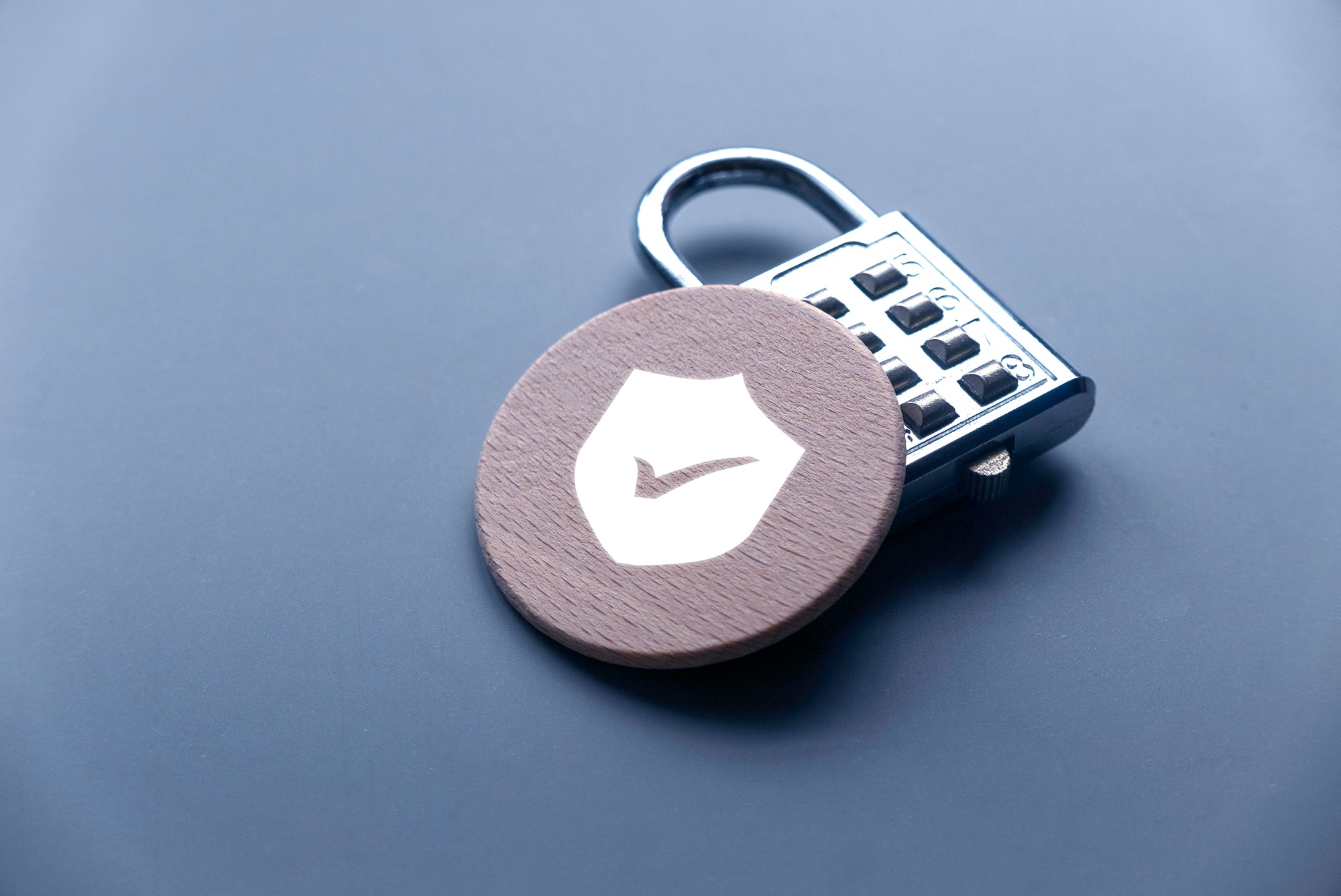Key Takeaways

- Understanding key cybersecurity terms is essential for protecting personal and professional information in today’s digital landscape.
- Familiarity with malware, phishing, firewalls, encryption, data breaches, and two-factor authentication (2FA) enables informed decision-making regarding online security.
- Implementing firewalls and encryption methods significantly enhances your organization’s defenses against unauthorized access and data breaches.
- Training employees to recognize phishing attempts can greatly reduce risks and prevent data loss from cyberattacks.
- Regular patch management and maintaining updated security software are crucial to safeguard technology infrastructure from vulnerabilities.
- DDoS attacks and ransomware pose significant threats to small businesses; preparedness through responsive mitigation services and regular backups is essential.
In today’s digital landscape, understanding cybersecurity terms is more important than ever. With cyber threats evolving daily, being familiar with the language of cybersecurity can empower you to protect your personal and professional information effectively. Whether you’re a business owner, a tech enthusiast, or just someone who wants to stay safe online, knowing these key terms will help you navigate the complexities of digital security.
From malware to firewalls, the jargon can be overwhelming. But don’t worry—this guide breaks down essential cybersecurity vocabulary in a clear and concise way. By grasping these concepts, you’ll gain the confidence to make informed decisions about your online safety and security measures. Let’s dive into the world of cybersecurity terms and equip you with the knowledge you need to stay protected.
Overview of Cybersecurity Terms

Understanding cybersecurity terms becomes crucial for small businesses navigating today’s digital landscape. Familiarity with essential vocabulary helps protect your organization from cyber threats.
- Malware: Malicious software designed to disrupt, damage, or gain unauthorized access to systems. This includes viruses, worms, and ransomware. Awareness of malware can guide you in implementing protective measures.
- Phishing: A deceptive attempt to obtain sensitive information, often through fraudulent emails or websites. Recognizing phishing attempts trains you to identify suspicious communications.
- Firewall: A network security device that monitors and controls incoming and outgoing traffic. Implementing firewalls creates a barrier between trusted internal networks and untrusted external networks.
- Encryption: The process of converting data into a code to prevent unauthorized access. Utilizing encryption secures sensitive business information, such as customer data and financial records.
- Data Breach: An incident where unauthorized access to confidential data occurs. Understanding data breaches prepares you to respond effectively and mitigate impacts.
- Two-Factor Authentication (2FA): An additional security layer requiring two different forms of identification before granting access. Adopting 2FA strengthens your protection against unauthorized access.
- Patch Management: The process of managing software updates to fix vulnerabilities. Regular patch management is essential to safeguard your technology infrastructure.
By integrating these cybersecurity terms into your business practices, you enhance your awareness and ability to defend against evolving cyber threats.
Common Cybersecurity Terms

Understanding common cybersecurity terms is essential for protecting your small business in the digital landscape. These terms encapsulate critical concepts that inform your decisions about tech and safety protocols.
Malware
Malware, short for “malicious software,” refers to software crafted to harm or exploit devices, networks, or data. This dangerous software includes options like viruses, worms, trojan horses, spyware, adware, and ransomware. Cybercriminals leverage malware to steal sensitive information, disrupt your operations, gain unauthorized access, or extort ransoms from your business. Safeguarding against malware involves maintaining updated security software and employee training on recognizing suspicious activities.
Phishing
Phishing describes the fraudulent practice of sending deceptive communications that mimic reputable sources, typically through email or text messages. Attackers aim to harvest money, access sensitive data, or install malware on your devices. Recognizing phishing attempts is crucial for small businesses to prevent data breaches. Educating your team about identifying red flags—like mismatched email addresses and unexpected attachments—can reduce your risk significantly.
Firewall
Firewalls serve as essential barriers between your internal network and external threats. They monitor incoming and outgoing traffic, filtering out dangerous data packets. For small businesses, deploying firewalls is crucial to protect sensitive information from unauthorized access. Implementing both hardware and software firewalls creates layers of security, enhancing your overall tech defense strategy.
Types of Cybersecurity Threats

Cybersecurity threats can impact small businesses significantly, making it essential to understand their various types. Recognizing these threats enables you to implement effective measures to protect your organization and its data.
Ransomware
Ransomware targets small businesses by encrypting files and demanding payment for their release. This type of malware can severely disrupt operations and potentially lead to data loss. Small businesses often face an increased risk due to limited cybersecurity resources. Implementing regular backups, keeping software updated, and training employees to recognize phishing attempts can mitigate the risk of falling victim to ransomware attacks.
DDoS Attacks
DDoS (Distributed Denial of Service) attacks overwhelm your server and disrupt the availability of your online services by flooding them with excessive traffic. Small businesses, especially those that rely on online operations, can suffer significant losses during such attacks. Instantly responsive mitigation services and redundancy measures can help maintain your service availability, ensuring you’re prepared against DDoS threats.
Key Concepts in Cybersecurity

Understanding key cybersecurity concepts is crucial for small businesses looking to protect their sensitive data and maintain their operational integrity in an increasingly tech-driven world.
Encryption
Encryption converts readable data (plaintext) into unreadable data (ciphertext), ensuring unauthorized individuals can’t access your information. Common types include:
- End-to-End Encryption (E2EE): Encrypts data on the sender’s device and only allows decryption by the intended recipient, which helps secure communications against third-party interception.
- Full Disk Encryption (FDE): Automatically encrypts all information on a storage device, making it inaccessible without proper authentication. This protects devices if lost or stolen.
- Field-Level Encryption: Encrypts specific data fields, like credit card numbers or Social Security numbers, enhancing security on websites and applications.
Implementing encryption strengthens your small business’s defenses against data breaches and reinforces customer trust.
Authentication
Authentication verifies the identity of users accessing your systems. Various methods can enhance security:
- Two-Factor Authentication (2FA): Adds an extra layer of security by requiring users to provide two verification factors—a password and something they have, like a smartphone.
- Biometric Authentication: Uses unique biological traits, such as fingerprints or facial recognition, to grant access, ensuring only authorized personnel can enter sensitive areas.
- Password Management: Enforces strong password policies to prevent breaches from weak or reused passwords. Utilizing password managers can help ensure secure credentials.
Improving authentication measures is vital for small businesses to protect sensitive data and mitigate the risk of unauthorized access.
Conclusion

Understanding cybersecurity terms is vital for navigating today’s digital landscape. By familiarizing yourself with essential vocabulary you can better protect your personal and professional information.
Whether you’re a business owner or a casual internet user knowing terms like malware phishing and encryption empowers you to implement effective security measures. This knowledge not only enhances your awareness of potential threats but also equips you to make informed decisions that safeguard your data.
Stay proactive in your cybersecurity efforts and continue to educate yourself on evolving terminology and practices. Your online safety depends on it.
Frequently Asked Questions
What is cybersecurity terminology?
Cybersecurity terminology refers to the specific language and vocabulary used to describe concepts and practices in the field of cybersecurity. Understanding these terms helps individuals and businesses better navigate the digital landscape and protect their data from cyber threats.
Why is it important to understand cybersecurity terms?
Understanding cybersecurity terms is crucial as it empowers individuals and businesses to make informed decisions about their online safety. Familiarity with key concepts helps identify threats and implement protective measures effectively.
https://www.youtube.com/watch?v=D4fYyu305jg
What are common cybersecurity terms to know?
Common cybersecurity terms include malware, phishing, firewalls, encryption, data breaches, two-factor authentication (2FA), and patch management. Each term plays a significant role in protecting sensitive information and maintaining security.
What is malware?
Malware is malicious software designed to harm, exploit, or gain unauthorized access to devices and networks. It can steal sensitive information and disrupt operations, making it essential to have up-to-date security software and employee training.
How does phishing work?
Phishing is a deceptive practice used by cybercriminals to trick individuals into revealing sensitive data through fraudulent communications. Recognizing red flags in emails and messages is key to preventing data breaches related to phishing attempts.
What is the role of firewalls in cybersecurity?
Firewalls act as barriers that protect internal networks from external cyber threats. Both hardware and software firewalls are essential components in enhancing a business’s security strategy by monitoring and controlling incoming and outgoing network traffic.
What is ransomware?
Ransomware is a type of malware that encrypts files on a victim’s device and demands payment for their release. Organizations should implement regular backups and employee training to mitigate the risks associated with ransomware attacks.
What are DDoS attacks?
DDoS (Distributed Denial of Service) attacks overwhelm servers with traffic, disrupting online services. To maintain service availability, businesses should consider responsive mitigation services and redundancy measures as part of their security strategy.
What is encryption in cybersecurity?
Encryption is the process of converting readable data into unreadable format to prevent unauthorized access. It enhances data security and customer trust, with methods like End-to-End Encryption (E2EE) and Full Disk Encryption (FDE) widely used.
Why is two-factor authentication (2FA) important?
Two-Factor Authentication (2FA) adds an extra layer of security by requiring a second form of verification in addition to a password. This method helps ensure that only authorized users can access sensitive information.
Image Via Envato: fauziEv8, AndersonPiza, wirestock, 1footage, rfaizal707, laguna947, Gajus-Images



